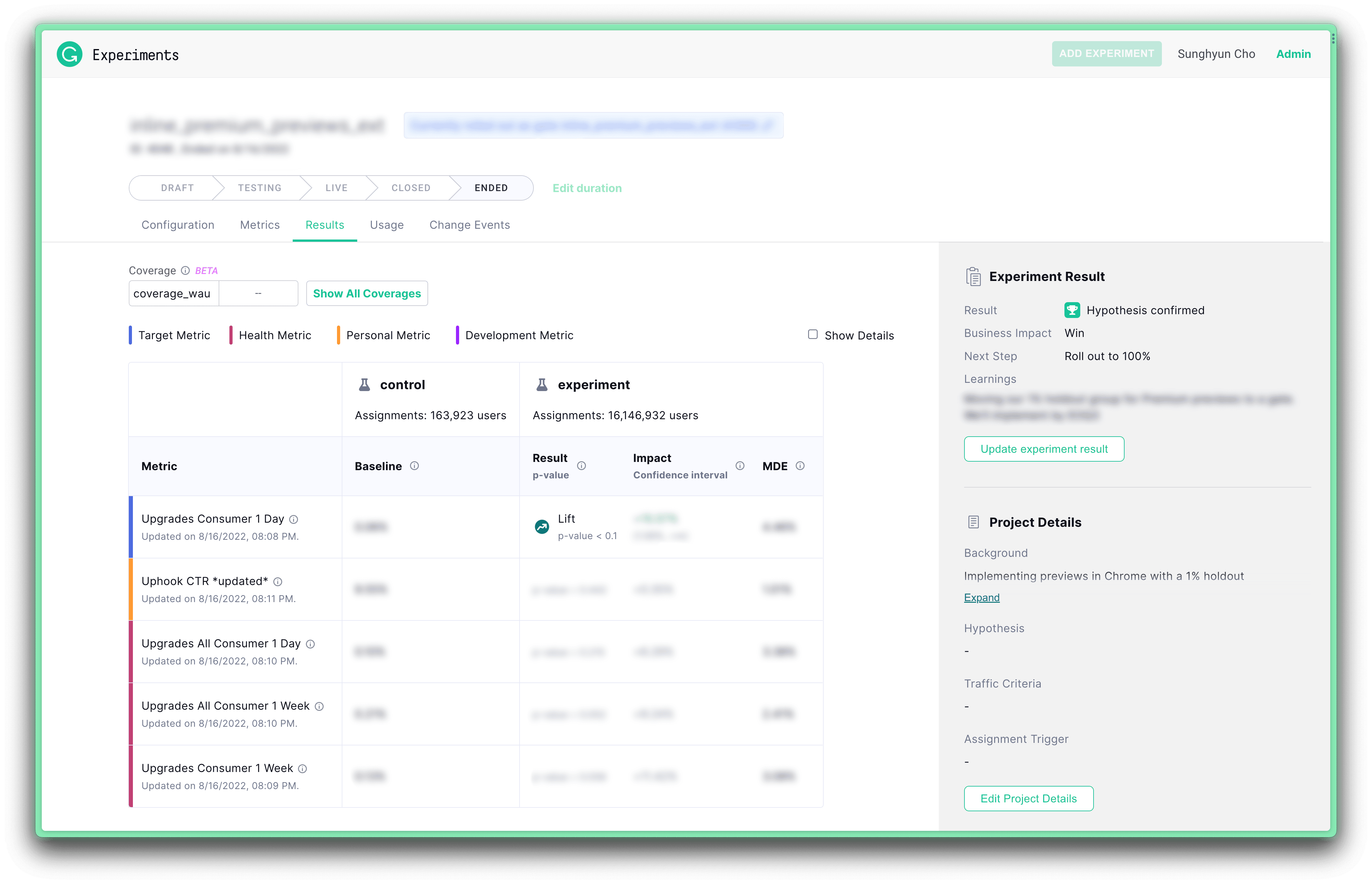Memex
Grammarly Work Note 2023-05-25
Experiments Team's Goal is to...
- Make experiments easy
- Make experiments consistent
flowchart TB
me["Me using Grammarly"]
expui["Experimentation UI"]
me-->feclient
feclient["Front-end Client"]
beclient["Back-end Client"]
feclient-->beclient
subgraph SDK
direction LR
jssdk["JS SDK"]
javasdk["Java SDK"]
end
feclient<-->jssdk;
beclient<-->javasdk;
subgraph "Experiments (Manakin)"
direction TB
private["Private API"]
public["Public API"]
treatmentserver["Treatment Server"]
assignmentserver["Assignment Server"]
experimentbeservice["Experiment Back-end Service"]
dynamodb["DynamoDB"]
end
experimentbeservice --Redis--> treatmentserver
experimentbeservice --> dynamodb
jssdk <--> public
javasdk <--> private
public<-->treatmentserver
private<-->treatmentserver
treatmentserver --Kafka--> assignmentserver
assignmentserver--Redis-->treatmentserver
assignmentserver-->dynamodb
treatmentserver --> dynamodb
expui --> experimentbeservice
subgraph Datalake
databricks["Databricks"]
gnar["GNAR"]
end
assignmentserver-->Datalake
databricks-->Datalake
feclient-->Datalake
beclient-->Datalake
- GNAR is the single source of truth that logs all of the relevant data. Grammarly is trying to move away from GNAR to Databricks.
- Manakin has 4 versions:
Dev,QA,Preprod, andProd.PreprodandProdmust be the same, and whereas Dev and QA is relatively free to tamper with data. - Metrics is what we use to extract information.
Entity Relationships
flowchart TB
exp["Experiment"]
temp["Template"]
exp--selects-->temp
metricdef1["Metrics Def 1"]
metricdef2["Metrics Def 2"]
metricdef3["Metrics Def 3"]
metricdef1 -.gathers..-> temp
metricdef2 -.gathers..-> temp
metricdef3 -.gathers..-> temp
expmetrics["Experiment Metrics (DynamoDB)"]
temp--emits-->expmetricsExperiment Team services
- Tools to configure experiments
- SDKs
- Feature Flag
Metrics
- Target Metrics (Cannot modify after creating the experiment. i.e., no cheating after the event)
- Health Metrics
- Guardrail Metrics (I don't want to screw this up accidentally)
- Informational Metrics
Improving Scorecards

Managing metrics is easier with a scorecard as it serves as the front end. In the past, we didn't have a scorecard and relied on experimenting with birds to extract GNAR data, which only showed numbers and not the p-value. Our goal is to create historical lines to improve our metrics management.
Why not buy a solution at Grammarly?
The reasons for this are mainly historical. First, Grammarly boasts a comprehensive, personalized architecture. The initial setup did not include a data lake. At its inception, there were no suitable public alternatives available. Additionally, the experimentation culture is ingrained in the user interface. Finally, choosing to purchase the product means adopting its unique work style. Our goal was to establish a work style that suited our needs.
Some things to keep in mind
- p-value hacking
- E2E testing should be something we must do as a failsafe. It prevents the human problem from happening again.
- Improving testing cadence: but we should be careful about Vanity Metrics
- Interaction Effect. when two experiments affect each other.
- Potential solutions:
- 1 experiment at a time.
- each experiment in one swim lane.
- measure independently → Our goal!